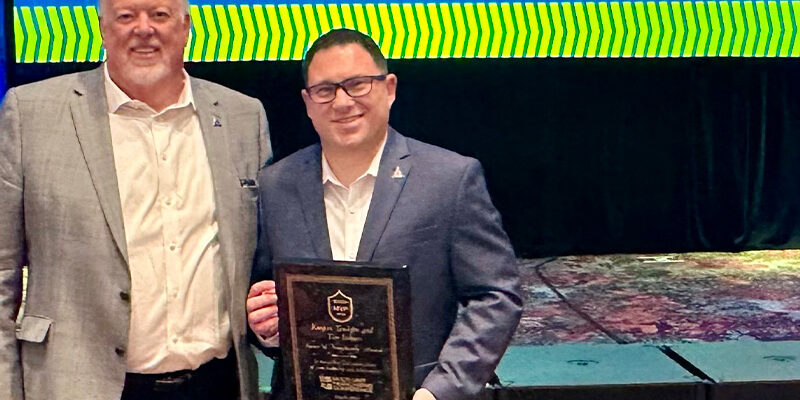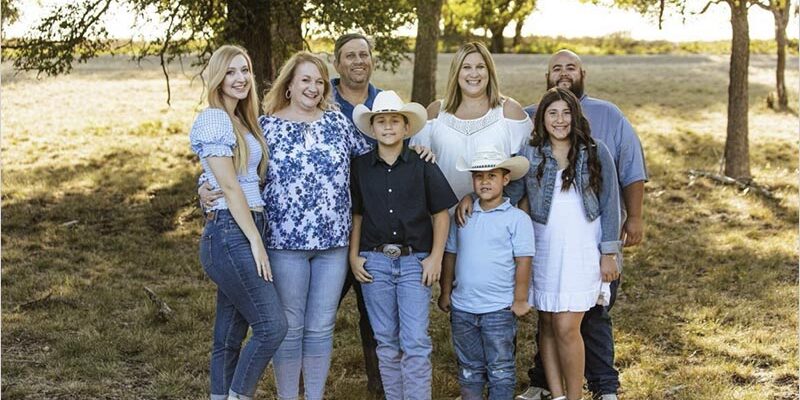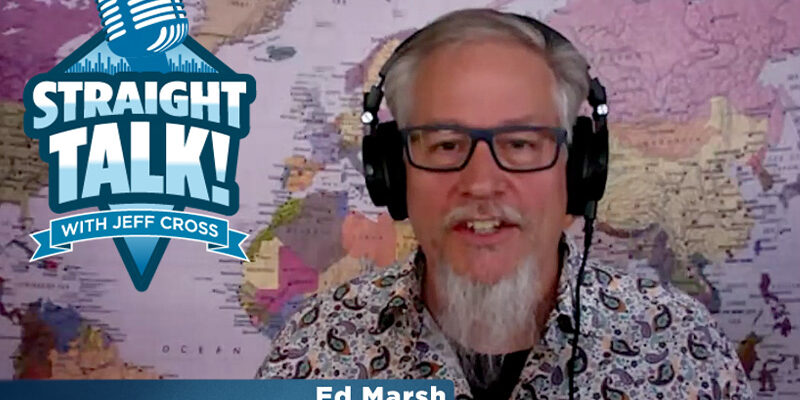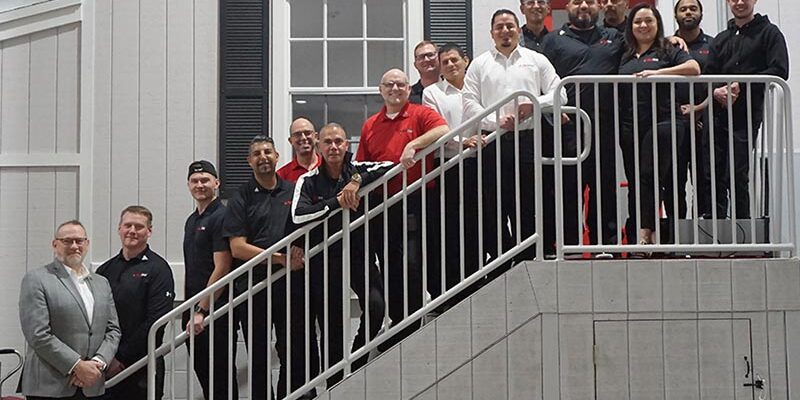Cleaning and Restoration Industry Eco-Certifications

By Rachel L. Adams
Eco-labeling may not be something cleaning and restoration professionals often concern themselves with, but as we saw in the the first part of this article (see it in the April 2018 issue of Cleanfax), it is important to know which companies carry the strictest eco-certifications — and which are simply using greenwashing.
Greenwashing arose as companies saw the growing demand for so-called “green” products and used that demand for marketing purposes alone. In our industry, while some products do carry eco-labels, they should be considered solely for marketing unless they carry one of the three long-standing recognized ecolebels used in the industry.
EPA’s program
In 1990, the EPA formed the Design for the Environment (DfE) program. Its creation came in response to the public’s increasing interest in and concerns for the safety of chemicals in common household and commercial products. DfE began to focus on two areas: Assessing alternatives to agency priority chemicals and recognizing companies for making best-in-class products containing safer chemical ingredients.
In the mid-2000s, Safer Product labeling began. In order to add incentive to the chemical selection process, DfE developed the certification program based on its standard for safer products and safer chemical criteria. This allowed companies to differentiate their products in the marketplace and make it easier for consumers and business purchasers to identify products that are safer for people, families, and the environment.
In 2015, the DfE standard for safer products was replaced by the Safer Choice standard. The new Safer Choice label has a more modern look to help consumers, businesses, and institutional buyers easily recognize products that have earned the label.
Safer Choice is not registered with ISO 14024, but it is accountable to the EPA. Products that qualify to carry the Safer Choice label must pass category-specific performance standards as defined in the Safer Choice standard. All products must perform comparably to conventional products. Safer Choice reviews all product packaging and partners are required to implement sustainable packaging measures and to improve the packaging profile for their recognized products during the partnership. Safer Choice restricts VOC content to minimize indoor air pollution and associated respiratory concerns. As of June 2017, 2,000 products have the Safer Choice label in the U.S.
UL EcoLogo program
The Canadian Government started The Environmental Choice Program in 1988, which was the first eco-labeling program in North America. While still owned by the Canadian government, management and delivery of the EcoLogo Program was licensed in 1995 to the private, for-profit, environmental marketing company TerraChoice, which took the program international.
TerraChoice and the EcoLogo program were purchased by UL Environment in 2010 and became part of the Underwriters Laboratories (UL) global network of standards and certifications. All products certified to an EcoLogo standard must meet or exceed each of the listed criteria before receiving the mark. EcoLogo-certification is classified as an ISO 14024 (Type 1) program for standards development and has been approved by the Global Ecolabeling Network (GEN). There are more than 7,000 products certified with the EcoLogo Label internationally.
EcoLogo-certified products, services, and packaging are certified for reduced environmental impact. Ecologo certifications are voluntary, multi-attribute, lifecycle-based, environmental certifications that indicate a product has undergone rigorous scientific testing, exhaustive auditing, or both to prove its compliance with stringent, third-party environmental performance standards. To view specific standards that a product has been certified under, product details can be found in the EcoLogo Sustainable Product Guide.
GreenSeal
GreenSeal was the first non-government-sponsored and not-for-profit environmental certification program. Launched in 1989, it is also classified as an ISO 14024 (Type 1) program for standards development. GreenSeal certification ensures that a product meets rigorous performance, health, and environmental criteria. These criteria are listed as Green Seal Standards. Achieving certification of products helps manufacturers back up their environmental claims and helps purchasers identify products that are safer for human health and the environment. GreenSeal’s standard development procedures have been reviewed by third parties and meet the guidelines of two ISO standards:
- ISO 14020: Environmental Labels and Declarations – General Principles
- ISO 14024: Environmental Labels and Declarations – Type I Environmental Labeling – Principles and Procedures
- Currently, GreenSeal has more than 4,000 certified products.
Product review and verification
Eco-labeling from the top three organizations serves to assure contractors that the product has been verified by third-party testing and has met rigorous criteria to be deemed a better choice compared to similar products in the marketplace. All three organizations agree that, although a product may be environmentally preferable, if it doesn’t work, it’s a waste of resources and therefore not sustainable. As part of the criteria, products are tested for performance and confirmation is given through third-party testing that they perform as well as, if not better than, similar products in their category.
Chemical safety
One of the primary factors among eco-labeling organizations is concern over human health. Products are assessed for toxicity to humans as well as the environment. Testing for volatile organic compounds (VOCs) and pH level determines how safe a product will be during use. The product ingredient list is also reviewed for known toxic components.
Sustainability
The definition of green products has varied wildly since the beginning of the movement in the 1970s. Eco-label organizations have brought credibility and science to define what makes a product green. As a result, the criteria for certifications took a more holistic approach to examine the lifecycle of a product. While the degree of investigation varies with each certification body, they all, to some degree, look into the details of a product. Examples of this would be reviewing raw materials/ ingredients, the manufacturing process, packaging and transport, the use of the product, and the final disposal of the product and packaging.
Two common benchmarks for chemical products are standardized testing for biodegradability and aquatic toxicity. Biodegradability is a measure of how quickly a product breaks down after it enters the environment. Aquatic toxicity shows the potential for a product to cause damage to highly sensitive aquatic organisms. A criterion for eco-labeling requires a product to be biodegradable and pose no aquatic toxicity.
Efficiency of green cleaning
At the core of any green cleaning program is a move to improve the efficiency of the use of chemicals. This includes looking at worker training, reducing chemical waste with proper dilution, and using products according to label directions. Many chemical manufacturers have now moved to using recycled content in packaging or Sustainable Forest Certified cardboard cartons. Most plastic containers are now recyclable where facilities exist. Manufacturers have also provided cost savings to contractors by offering product in bulk containers. These efficiencies provide a better way of using chemicals and are designed to reduce labor and save money for the end user.
Additional supporting data
Other types of supporting data that are not commonly required by certification bodies may be available from a manufacturer for a product, which separates it from others in terms of irrefutable scientific evidence of safety or sustainability, regardless of the certification label the product may or may not carry. Such types of data are:
Full ingredient disclosure. This is always the best way for an interested consumer to review product ingredients but difficult for manufacturers to preserve unique formulations,
USDA bio-based carbon 14 testing. This is an established method of determining whether product ingredients are authentically botanical and renewable or sourced from petrochemicals without having to reveal potentially proprietary ingredients.
This level of data is the pinnacle of the art and leaves no room for the influence of pursuing profit, politics, or marketing greenwashing.
Summary of differences
While Safer Choice tends to focus mostly on the ingredients list of a product, Ecologo and GreenSeal’s criteria focuses on the product’s lifecycle. Neither approach is wrong, but it would stand to reason that an overall view of a product’s lifecycle provides a better understanding of its environmental impact.
All organizations need to generate revenue to stay in business. Therefore, there is an intrinsic temptation to certify more products to grow revenue. Consequently, not all of the standards represent “the best-in-breed” products but are broad enough to capture more of the products already on the market, taking more of a “better-than-the-worst” approach.
Additionally, some of the standards have become quite prescriptive and consequently have directed formulating-to-standards innovation instead of embracing outside innovation as it occurs. Again, neither of these observations are unethical, but rather something to be aware of when evaluating a product, standard, or a certification body.
The bottom line is that with the state-of-the-art eco-certifications, they clearly and factually identify cleaning and disinfection products that are safer, viable alternatives to traditional synthetic chemistries.
Differentiating and growing
For the cleaning and restoration professional, many eco-certified products offer the opportunity to differentiate your business or service by marketing the use of safe, effective products that will not pose additional harm to the insured, occupants, pets, and technicians onsite. This is a valuable and effective differentiator that, if marketed effectively, can increase brand awareness in your market and drive sales growth.
One way to introduce a green program is to offer a “green package” (at a slightly higher cost if you choose) as an alternative. Once explained, it is almost always chosen.
On the topic of cost, eco-certified cleaning and disinfection products are no longer premium priced when compared to other products. Any slight price premium is easily compensated by the benefits of high performance and safety (e.g., less labor and less PPE required).
Additionally, new business can be found through various growing movements today that require products certified by any of the three organizations:
- LEED-certified buildings,
- EPA’s environmentally preferable purchasing programs,
- Federal green procurement programs.
As more organizations develop sustainability platforms as part of their mission and value statements, this area of environmental awareness will only continue to increase. One thing is certain, the market isn’t going to go backward. This is the way of the future, and it is ripe with opportunity for the cleaning and restoration professional.
References
- “Who’s Deciding What’s Green?” Ecolabel Index. 2018, ecolabelindex.com. Accessed Dec. 2017.
- Dauvergne, Peter. “First eco-label certification — Germany Blue Angel.” Historical Dictionary of Environmentalism, second edition, 2016, pp. 86, ly/2n2cw3p. Accessed Dec. 2017.
- “The Six Sins of Greenwashing™: A Study of Environmental Claims in North American Consumer Markets.” TerraChoice, Nov. 2007, com/index6b90.pdf. Accessed Dec. 2017.
- “What is ecolabelling?” Global Ecolabelling Network. globalecolabelling.net/what-is-eco-labelling/. Accessed Dec. 2017.
- “13.020.50.” Standards catalogue. International Organization for Standardization. Dec. 8, 2016, iso.org/ics/13.020.50/x/. Accessed Dec. 2017.
- “Introduction to Ecolabels and Environmental Product Declarations.” Ecospecifier Global. ecospecifier.com.au/knowledge-green/technical-guides/technical-guide-9-introduction-to-ecolabels-and-environmental-product-declarations.aspx. Accessed Dec. 2017.
Rachel Adams is founder and president of Indoor Environmental Management Inc. and a 23-year veteran of the water damage and environmental health industries. She holds an IIRC Master Restorer designation and bachelor’s degrees in environmental health sciences and medical technology. Adams has served on the IICRC Board of Directors and as a Technical Advisory Committee Chair. She currently serves on the S520 Standard and Reference Guide for Professional Mold Remediation committee, teaches multiple IICRC courses, serves on the boards for the Society of Cleaning and Restoration Professionals and the Low Moisture Carpet Cleaning Association, is an OSHA outreach trainer, and serves as an expert witness.












